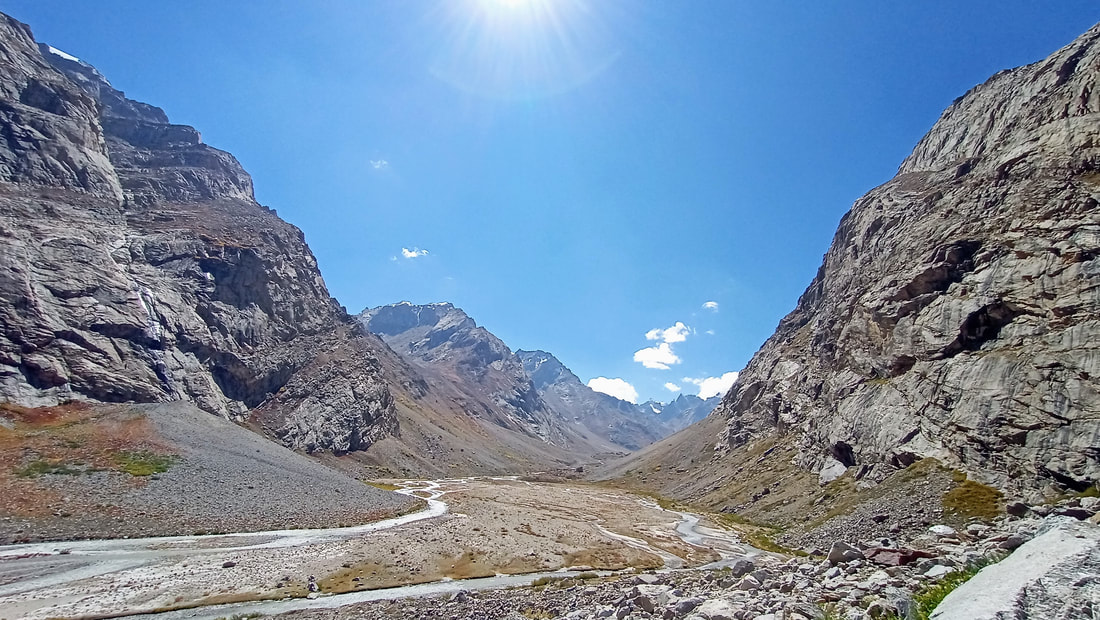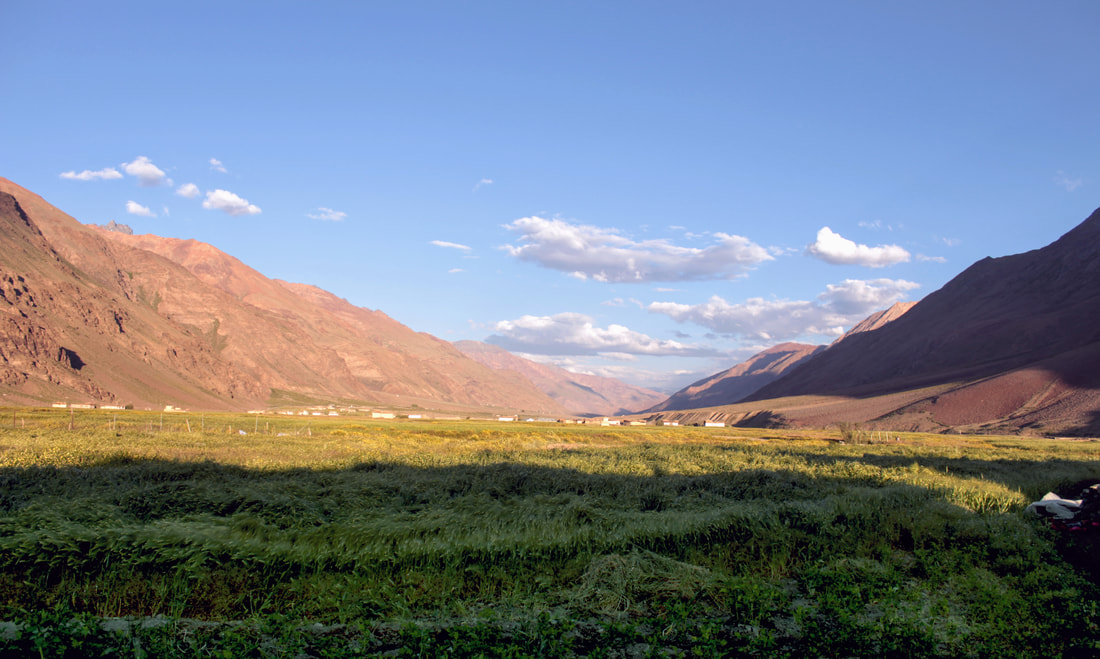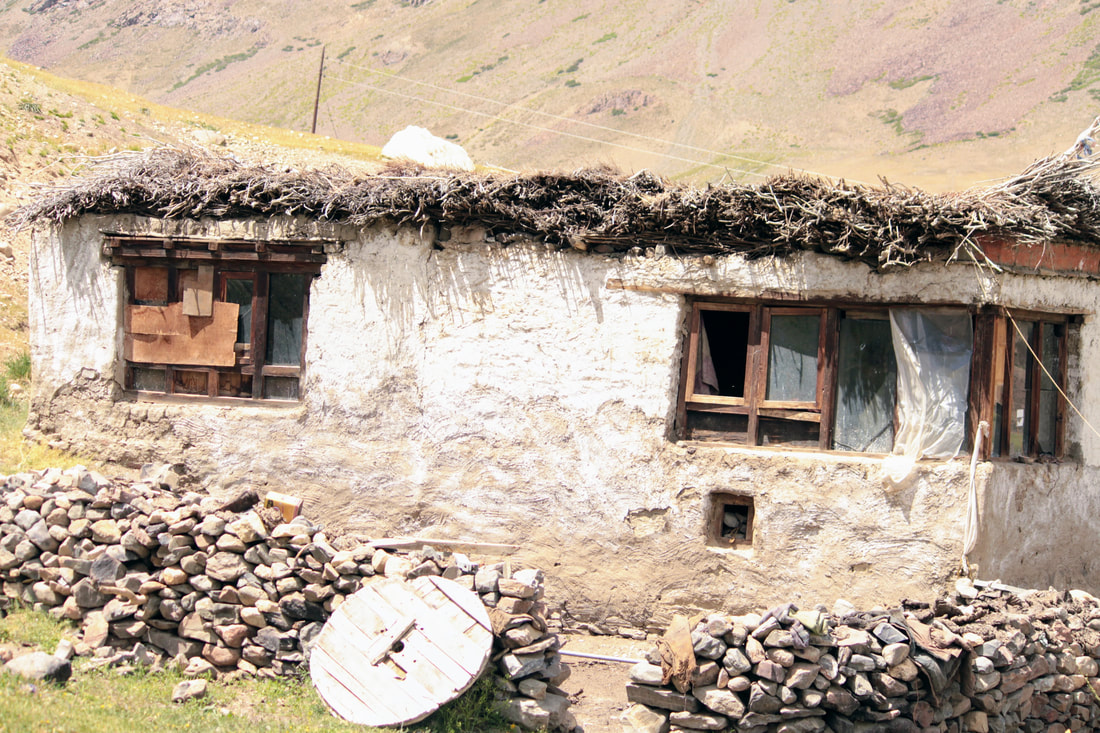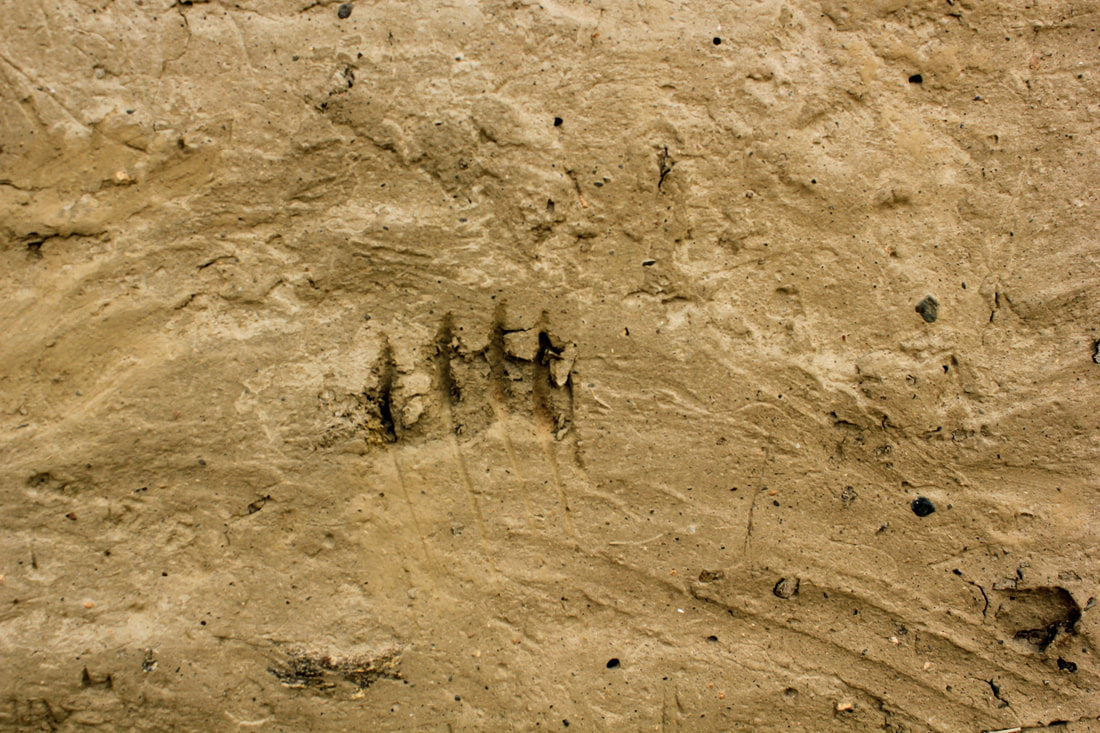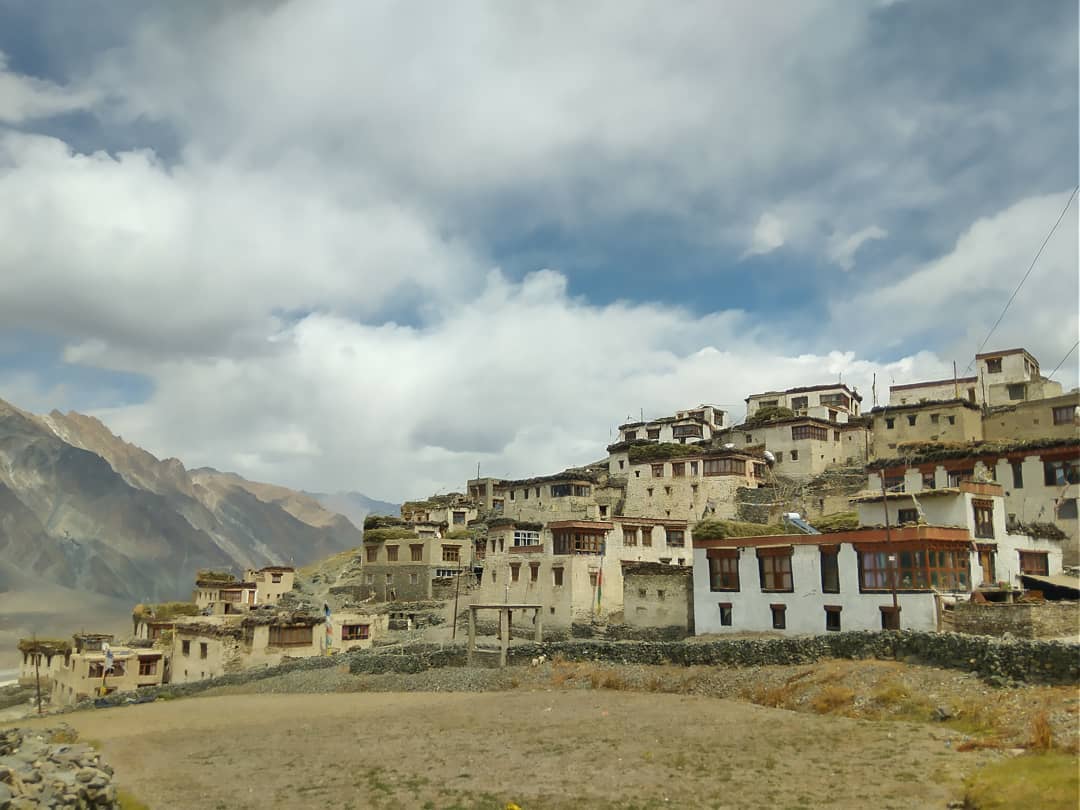Living with Tenmo : Bear Encounters in Doksas and Villages of Zanskar
By
Bipasha Majumder and Kirti Chavan
“It’s a tenmo, a bear!”
“What should we do?”
“I don’t know. Let’s just lay here and not move. Hopefully, the bear will lose interest and go away.”
“What should we do?”
“I don’t know. Let’s just lay here and not move. Hopefully, the bear will lose interest and go away.”
Tsering Dolma, of old Padum village in the Zanskar region of Ladakh, recounts the incident when she and her friend came face to face with a Himalayan Brown Bear (Ursus arctos isabellinus) for the first time. They were asleep on the roof of their temporary doksa one warm summer night almost ten years ago, when Dolma was woken up by something wet touching her face. Although she was scared, she did not sit upright as she guessed what it could be. Conversing in whispers, she and her friend decided to wait till the animal, which had ventured too close to human habitation, left the doksa. Dolma says it was the most frightening yet the most exciting event of her life and she could not stop talking about it for days.
Socio-ecological changes, for the agro-pastoral communities of Zanskar, have been imminent since the first vehicle in form of a truck rolled into Padum after a road was built in the 80s connecting it to Kargil. Padum, a small village then has now transformed into Zanskar’s main town and administrative headquarter. Located southwest of Leh, Zanskar, till a few years ago, was considered one of the most remote and inaccessible regions of Ladakh with connectivity to other regions being limited to a few summer months. Heavy snowfall and extremely cold winters cut it off from the outside world for the rest of the year through trade and exchange continued in a reduced way through the perilous route over the frozen river Zanskar during this time.
Importance of the Doksa System in Zanskar
Despite increasing connectivity and resultant trickling down of urbanisation, the people of Zanskar, especially in Stod Valley, have held onto their traditional way of life in many ways including the nomadic agro-pastoral system of the doksa. While the numbers of livestock population have gone down dramatically all across Ladakh and communities in other valleys now prefer to take their livestock to pastures closer to their villages, herders of Stod Valley still take their livestock to the far-away highlands near Pensi La. This is probably why the dairy products from Stod Valley are known for their better quality and nutrition. The butter produced from here is believed to have medicinal properties and hence much in demand in the whole of Ladakh and other Buddhist settlements in India. Its by-product, chhurpey, a hardened cheese, is high in protein and an important ingredient in most Ladakhi cuisines like Thukpa.
Livestock rearing, apart from agriculture, is an important source of livelihood in Zanskar as other sources of income are almost non-existent. The livestock that includes yaks, demos, dzos, dzomos, goats, etc., provide them with means of transport, milk, and milk products, dung for soil regeneration and melting of snow, fuel, hide, meat, and more. Shortage of space for fodder and foraging in the valleys inhabited by communities, cold highlands with proximity to glaciers, and vast alpine common pasturelands have led to the system of doksa or high-altitude pastoralism in Zanskar. In this cyclical system of movement from valleys to highlands during the short summer months, households assemble their livestock and send them with a group of herders to pasturelands high in the mountains where they stay till the start of the winter season. The animals can not only forage in natural spaces but also stay away from crops growing in the farmland. They come back to the valleys in time to help in the thrashing of the harvested crops.
Though roles are changing, traditionally, women herders like Dolma and her friend, take the livestock from their and neighbouring villages to the doksas where they look after the animals, milk the dzomos, make curd, butter and chhurpey. The products are then sold at Padum, from where they are transported to other parts of Ladakh. Shops in Leh town wait for winter to set in when many Zanskaris move to the town bringing butter and chhurpey along with them.
Though roles are changing, traditionally, women herders like Dolma and her friend, take the livestock from their and neighbouring villages to the doksas where they look after the animals, milk the dzomos, make curd, butter and chhurpey. The products are then sold at Padum, from where they are transported to other parts of Ladakh. Shops in Leh town wait for winter to set in when many Zanskaris move to the town bringing butter and chhurpey along with them.
Living with the Tenmo
Life, however, is not easy for the herders who have to live in the summer pasture for months so that the livestock can graze on high-quality mountain herbs. They have to deal with extreme weather conditions and interactions with wild animals. For a pastoralist, losing a sheep or a goat in the doksas to a snow leopard or wolf is a part of life. Over the years, they have learned to deal with wildlife interactions in the mountains as they are familiar with the ways of a stealthy snow leopard or the resilient wolf. However, unlike the snow leopard or the wolf, herders are not accustomed to bear behaviour. The few encounters with the Himalayan Brown Bears which occur in the doksas are always a bit of a challenge, even though herders never consider bears to be the main threat to their livestock.
Herders currently are reporting limited bear encounters in the doksas as the bears now have moved closer to human habitation and targeting villages directly. Most villages across Stod Valley have reported the presence of bears in and around them with multiple accounts of bears digging up people’s fields and/or trying to break into homes in search of food. Some people who look at this sudden intrusion in their lives philosophically, feel it could be the result of bad karma, while the more pragmatic ones understand that this could be due to the lack of natural food of the bears in the mountains.
Unlike Dolma’s story from a decade back, the present-day bear stories are less amusing. Yangdol from Rangdum claims that bears are extremely clever and they can form an alliance with other animals for food. One time, while she was at her doksa in Pensi La, a bear, being powerful, broke down the door of the livestock enclosure. As the sheep ran out, the fast and agile wolves were waiting to catch and kill them. When she stepped out as a result of the commotion, she saw the bear and wolves feasting on the kills. The next morning, during an inspection of the livestock enclosure, she saw a bunch of bear fur lodged between the stones which made it apparent how the bear and wolves worked together.
In another village which is located at the start of Stod Valley, bears have been targeting a tea stall and a monastery with regular frequency. According to Tundup Dorjey, the tea stall owner, the bears are addicted to junk food as most of the time they go straight after the cola bottles and packets of instant noodles that they consume along with the packaging. Bear poop with undigested plastic packaging of noodles is sometimes found nearby.
In another village which is located at the start of Stod Valley, bears have been targeting a tea stall and a monastery with regular frequency. According to Tundup Dorjey, the tea stall owner, the bears are addicted to junk food as most of the time they go straight after the cola bottles and packets of instant noodles that they consume along with the packaging. Bear poop with undigested plastic packaging of noodles is sometimes found nearby.
The Changing Future
There are many scientific speculations as to why the bears are coming into human habitation including lack of natural food in their habitat and a fast-changing climate. However, all these speculations need more investigation. The rise in interactions between humans and brown bears also needs urgent conservation interventions as it’s increasingly putting both people and bears at risk. As the new road tunnel to Darcha has now made Zanskar more accessible to outsiders, tourism is expected to rise in the near future. Along with increasing bear encounters, for the traditional agro-pastoralists of Zanskar, the future holds many transformations that are set to test the resilience of this hardy community.
Some studies attribute climate change as one of the main causes of the change in bear behavior. Climate change has started showing its impact on the lives of local Zanskaris as well. The above photo is of Kumic village that is currently facing the brunt of climate change.
Acknowledgment: We are grateful to the people of Zanskar who shared their stories with us. We also acknowledge Snow Leopard Conservancy – India Trust for their wildlife conservation efforts in Zanskar. Image Credits : Bipasha Majumder and Kirti Chavan
|
18/05/2021
|
Explore | Share
|
Bipasha Majumder
|
Bipasha Majumder is an independent writer and researcher with an interest in the environment, wildlife, and culture.
Kirti Chavan is a researcher and wildlife conservationist at Snow Leopard Conservancy-India Trust, working on human-brown bear conflict and conservation issues in Zanskar, Ladakh. |
Kirti Chavan
|
